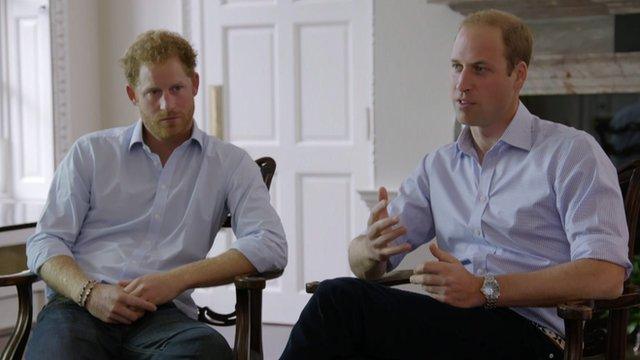Ant and Prince Charles - is a double handshake ever a good idea?
- Published
- comments
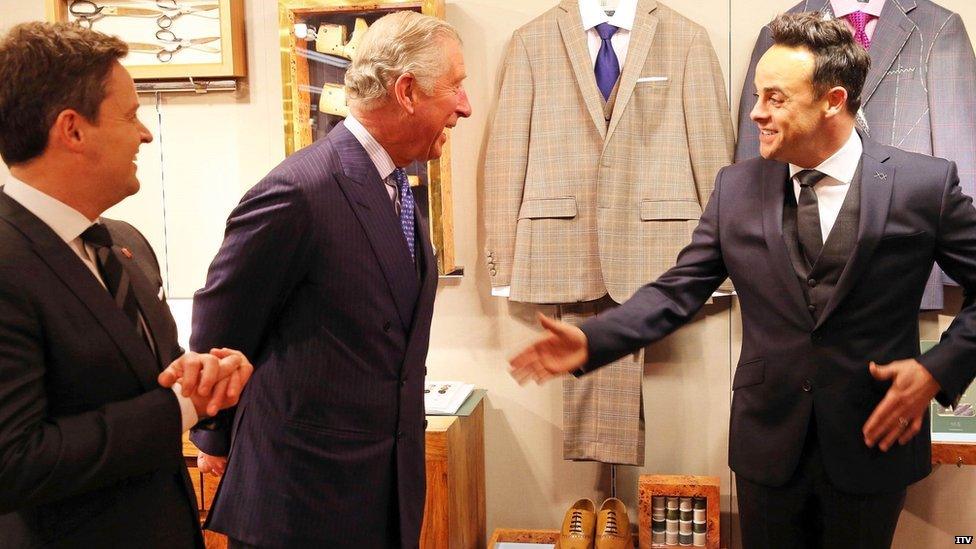
Ant goes in for a royal handshake, breaking another protocol that Charles should have been the one offering his hand first - according to etiquette expert William Hanson
A good old British handshake. Defined by the Oxford English Dictionary as "an act of shaking a person's hand with one's own, in greeting or farewell, or as a sign of assent, good will".
Simple, effective, easy to get right. Works at every level of society.
So when TV presenters Ant and Dec spent a few days in the company of the Prince of Wales to film an ITV documentary marking the 40th anniversary of the Prince's Trust, external, keen etiquette watchers were quick to use social media to comment on Ant's handshake with the prince who will one day be king - and perhaps even say "Arise, Sir Anthony".
The prince offers Ant his hand (Ant had earlier broken royal protocol by making the first move). Ant shakes it firmly and then places his left hand on top in one classic variation of what is popularly known as the "double handshake".

Here's how to do it, Ant: Prince Charles receives an etiquette-perfect handshake from Dec. Credit: When Ant & Dec Met The Prince: 40 Year of The Prince's Trust
To provide some context, the exchange was wrapping up an "informal chat" in which Prince Charles said his Welsh home would be a "nice place" for Dec's (then) upcoming honeymoon and thanked the pair for being "nice to my darling wife".
Thankfully for Ant, there was no regal flinching following his supposed faux pas - a testament to the fact that the TV duo had built up a warm relationship with the prince. But is a double handshake ever an appropriate move?
Etiquette experts Debrett's never comment on an individual's behaviour but their website clearly sets out what is expected in a handshake:, external
Handshakes are brief, and should preferably be accompanied with direct eye contact. Do not complicate the greeting with other forms of touching - hands on the back, double-handed handshakes etc. Britain is still a comparatively non-tactile society.
The origins of the double-handshake are often credited to former US President John F Kennedy but in recent years it has often been labelled as "a politician's handshake" and associated with false sincerity.
And in business circles, it is often associated with one-upmanship. The Definitive Book of Body Language, by Barbara and Allan Pease, labels it the "double-hander" and says it "communicates dominance through intimacy".
The authors advise it should only be employed in situations where a hug would also be acceptable - which naturally rules out most business, political and royal encounters.

Glad-handed - the exponents of the double handshake
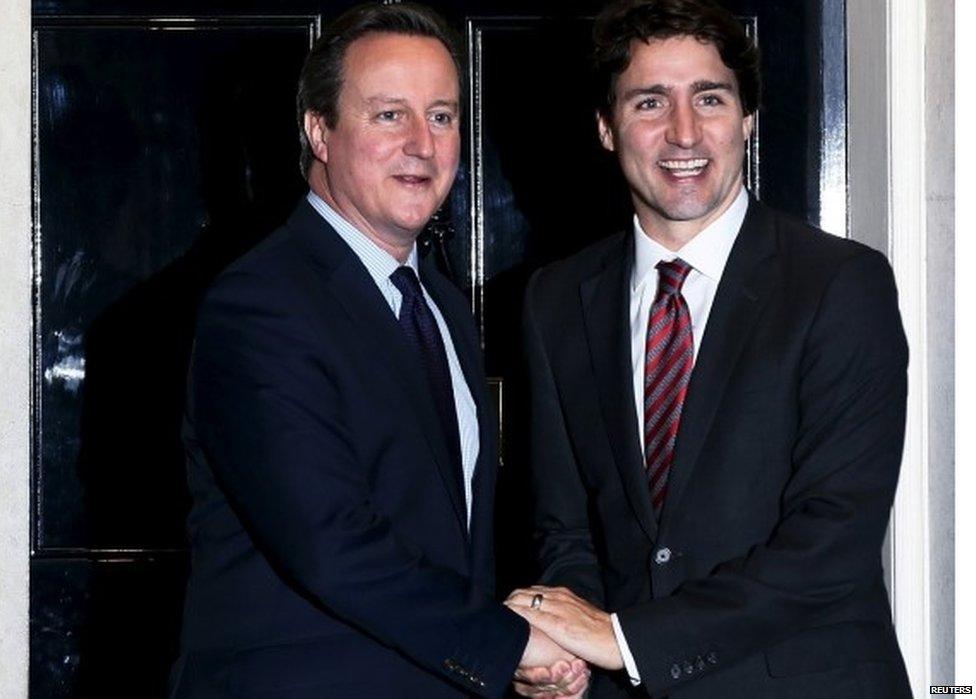
Canadian Prime Minister Justin Trudeau is a serial double-handshaker, seen here with David Cameron on a visit to the UK

Justin Trudeau also executed the shake with Turkish President Recep Tayyip Erdogan
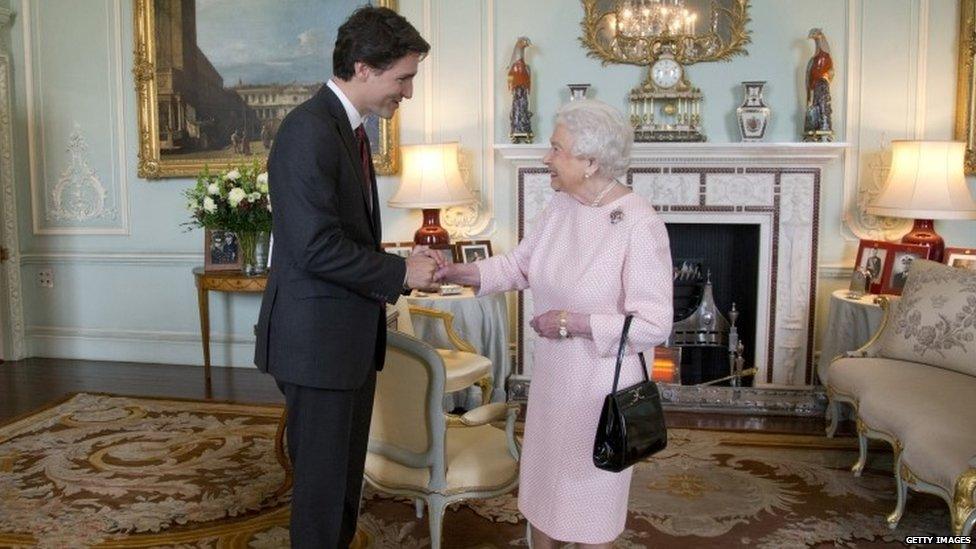
It was a more gentle double handshake when he met the Queen but again both hands had a role in his greeting
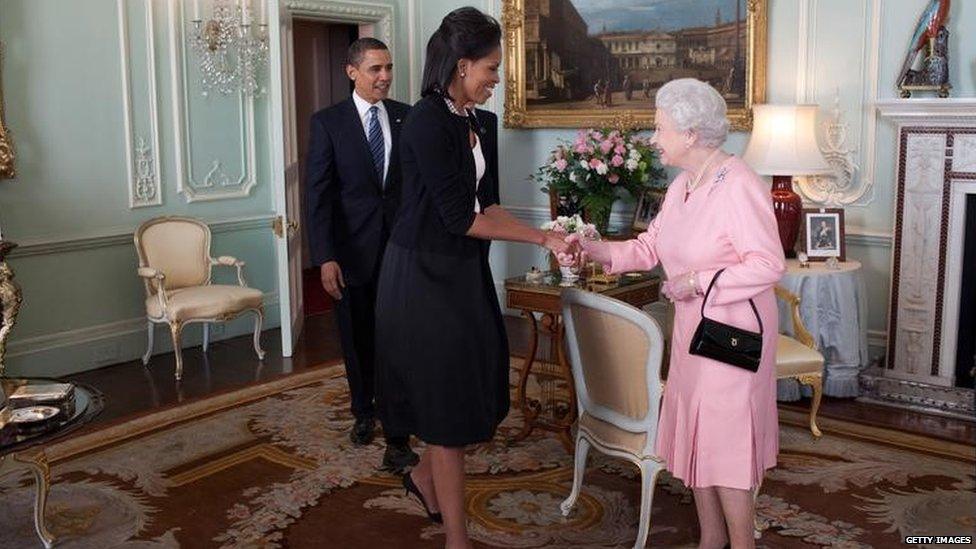
Michelle Obama was another who had both hands in play when meeting Her Majesty
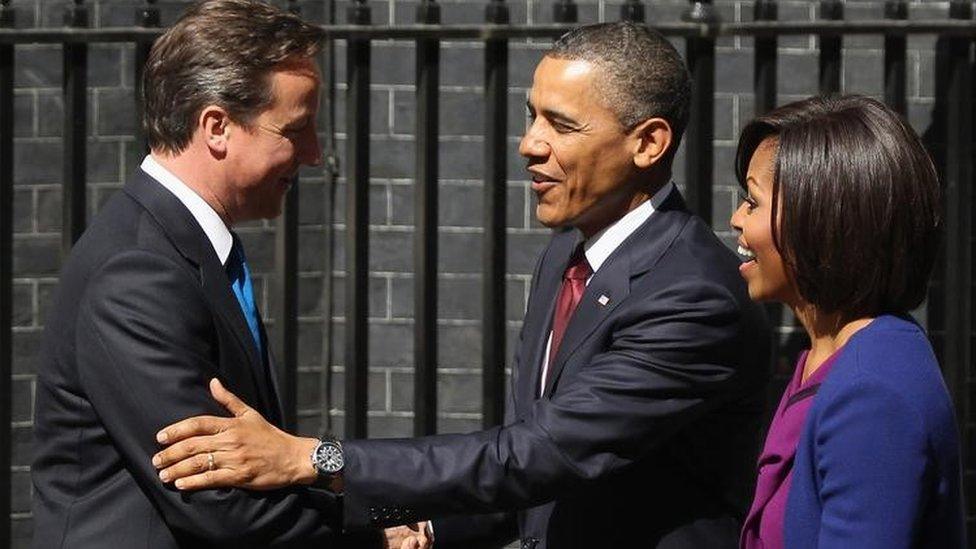
US President Barack Obama opted for a near relative of the double handshake - the elbow touch - when meeting David Cameron

Palestinian leader Yasser Arafat looked very comfortable giving Tony Blair a double handshake in 2001
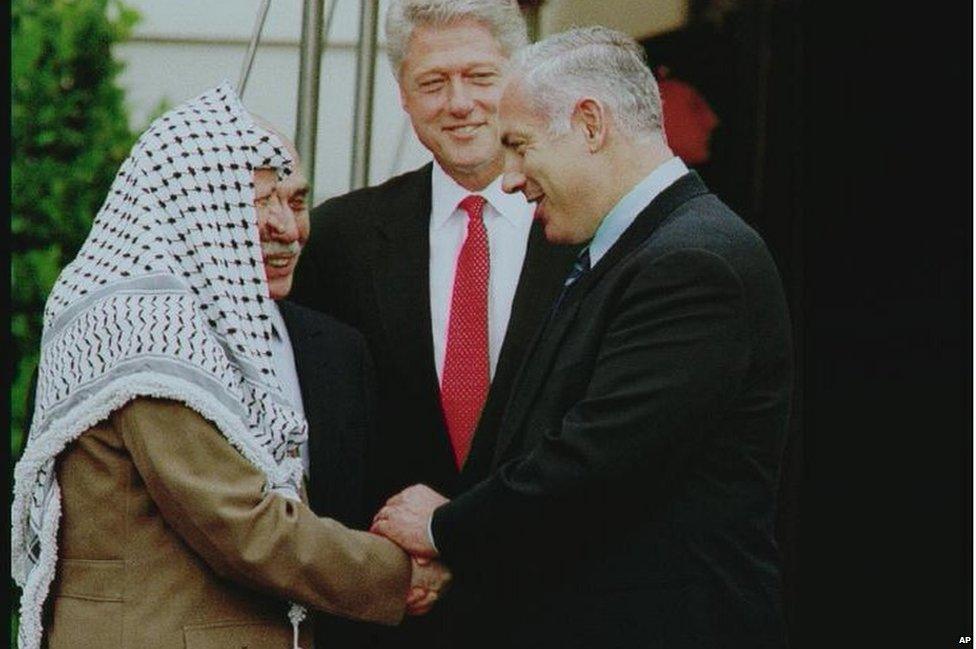
And the Palestinian leader looked equally at ease when he was the recipient of Israeli Prime Minister's Benjamin Netanyahu's double handshake
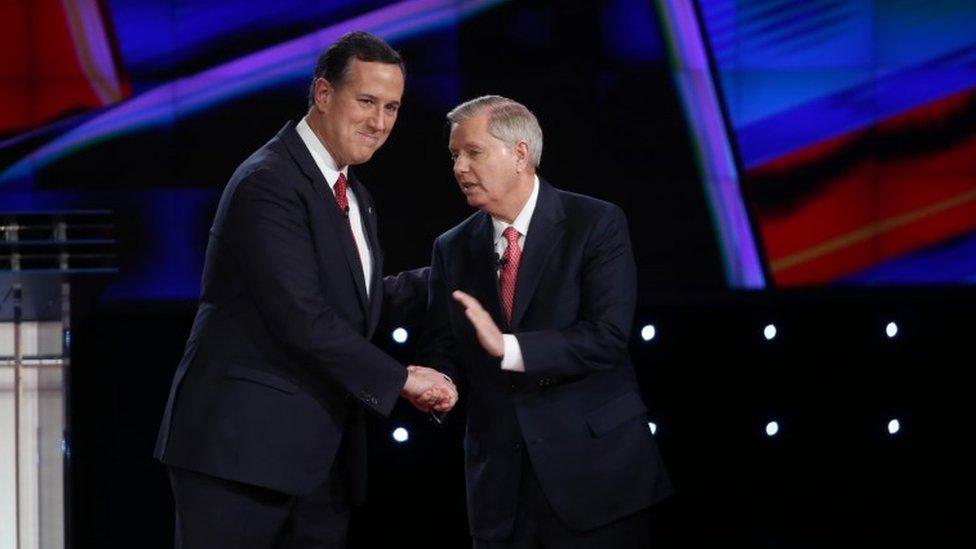
How two politicians can both exert power: Republican presidential candidates Rick Santorum opts for the handshake and arm round the back; Senator Lindsey Graham is about to complete the double shake
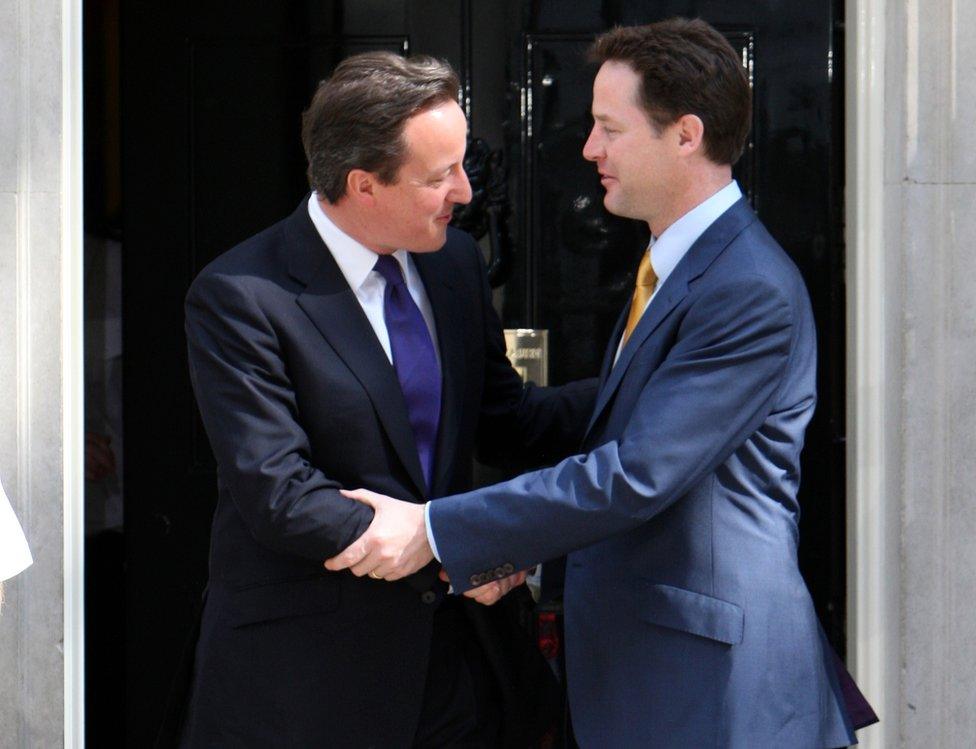
And finally, not just a handshake or a double handshake - more a basic wrestling move as David Cameron and Nick Clegg seal their coalition deal in 2010

Leading etiquette expert William Hanson, who provides coaching to individuals and businesses, external - including those who are about to meet royalty - is quite clear that a double handshake is almost always best avoided.
He said: "Body language experts will say it shows insecurity. If you use your free hand on top of the handshake, you are entrapping someone by saying 'I'm on top of you'.
He says the classic example of that was after the 2010 election when the Conservative/Lib Dem coalition was formed and David Cameron welcomed Nick Clegg to Downing Street - an occasion when both politicians wanted to be seen to be "in control" of the handshake.
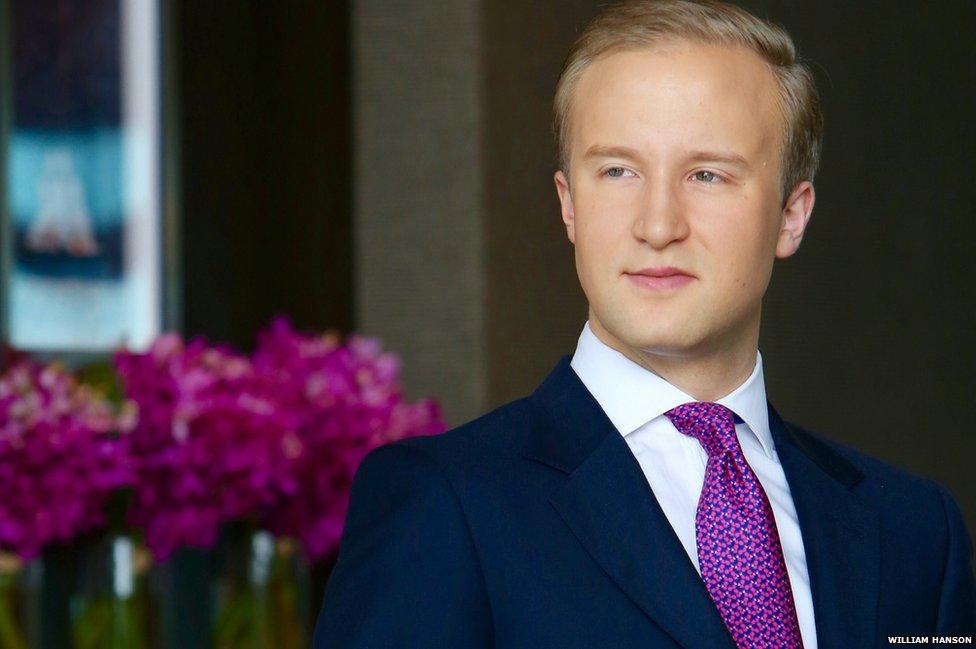
William Hanson coaches business leaders, VIPs and schoolchildren in the art of etiquette
In social life, Mr Hanson agrees there are times when the double handshake might seem more natural - such as long-time friends greeting each other after a long absence and adding a touch of intimacy as they continue chatting and shaking hands.
But he says that he advises his own clients - who include several VIPs - that simple is always better.
"A good handshake is sadly very rare.
The double handshake is not really advisable and certainly not with someone you have not met before. It is a little insincere."
- Published3 January 2016

- Published3 January 2016
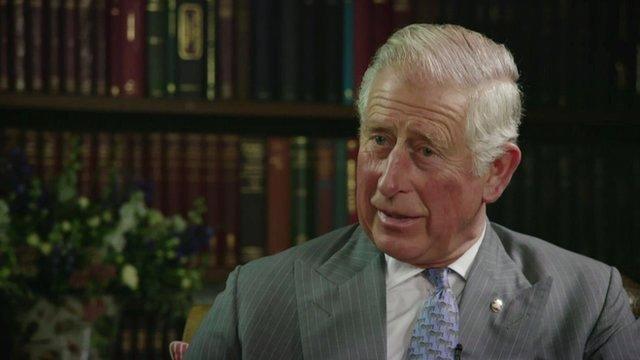
- Published3 January 2016
